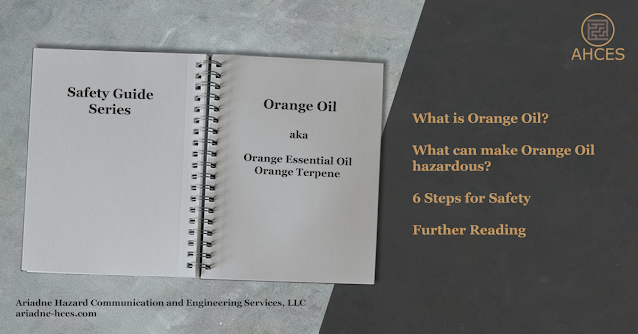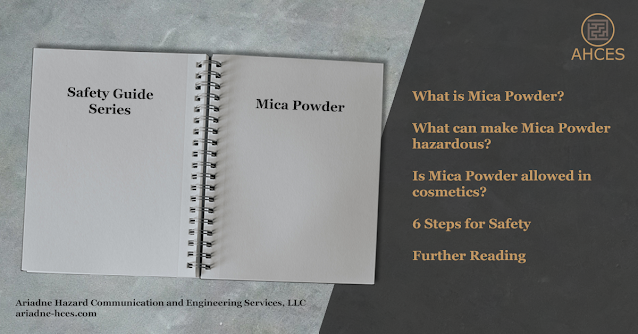Acetone Safety Guide
What is Acetone?
Acetone, also known as 2-propanone, dimethyl ketone, or beta-ketopropane, is a type of methyl ketone. In industrial applications, it is used in the production of methyl methacrylate and bisphenol A, which are plastic precursors. It is also a commonly used solvent in household applications, notably as nail polish remover and paint thinner.
Acetone has the CAS Number 67-64-1.
The CAS Number is used to identify acetone as an ingredient on safety data sheets (SDS) and other safety documentation. When looking for acetone as an ingredient in products, look for the above CAS Number within the composition table.
Notable Properties of Acetone
Acetone is a clear liquid, with a distinct sweet odor. It is a polar, aprotic solvent which is what makes it useful in multiple solvent applications.
What Makes Acetone Hazardous?
Acetone is highly flammable. It produces vapors that are heavier than air, which means that the vapors can more easily gather in dangerous concentrations within enclosed spaces.
Acetone vapor can be irritating to the eyes and mucous membranes of the respiratory stem. High concentrations of acetone vapor, if inhaled, can have an anesthetic effect, in extreme cases leading to cardiorespiratory failure and death. Prolonged contact with skin can cause irritation, both by drying the skin and causing defatting.
Acetone Frequently Asked Questions
Are Acetone Fumes Harmful?
Yes, as mentioned above, acetone vapors can be harmful to the eyes on contact and to the nose, throat, and lungs if breathed in. Acetone vapors are also flammable.
Should Acetone be Used in a Fume Hood?
In a commercial space, such as a laboratory or industrial environment, yes, it is best to use acetone in a fume hood or with other appropriate ventilation system. The fume hood will reduce the concentration of acetone vapors by venting them to a safe location.
For non-commercial spaces, such as a garage workshop, acetone should be used in a well-ventilated area.
Are Acetone and Nail Polish Remover the Same Thing?
Most commercially available nail polish removers are acetone-based. Some nail polish removers, particularly those marketed as acetone-free, are made from isopropyl alcohol, also known as rubbing alcohol.
Be sure to check the label on your nail polish remover to know what it is made from to take appropriate safety measures.
6 Steps for Safety
Step 1: Read the Warnings
When working with a product for the first time, always read all the safety documents first. This includes safety data sheets, which should be provided by the manufacturer or importer of the acetone. There may also be an OSHA chemical label or a Consumer Protection label on the packaging of the acetone product. These documents all contain important information on the hazards of the product and instructions on how to mitigate those hazards.
Different compositions in different products may cause additional hazards to be present beyond the properties of pure acetone. Be sure to familiarize yourself with the differences between separate acetone products.
Step 2: Prepare Your Workspace
Creating a safe workspace, sometimes referred to as engineering control, is a key component of working safely with any potentially hazardous substance.
The vapors from acetone are one of the major hazards. Work should be done in a well-ventilated space. Care should be taken to make sure the vent location is also safe and no other people are accidentally exposed to the acetone vapors.
Step 3: Gather Your PPE
For acetone, the following PPE is recommended depending on the quantity being used. This is particularly important when using larger quantities of acetone, such as in an industrial setting.
- Respiratory Protection
- A half-facepiece respirator with filters rated for protection against organic vapors.
- A full-facepiece respirator can serve as both respiratory protection and eye protection.
- Eye Protection
- Safety goggles which create a seal around the eyes are needed to prevent any acetone vapor from reaching the eyes.
- Open safety glasses, which do not have a sealing surface, will not work in preventing vapor from reaching the eyes.
- Gloves
- Chemical compatibility is important due to acetone being a solvent. Emerson, a major manufacturer, has a compatibility chart on page 661 which includes listing for acetone and several major polymer groups.
- Nitrile, one of the most common materials for disposable gloves, is incompatible with acetone and should not be used. The material can degrade when exposed to acetone and will be rendered ineffective for protection.
- Gloves made from butyl rubber, silicon, or natural latex can be used.
Step 4: Clear Your Workspace
Having a clear workspace is an important part of safety. Clutter can cause accidents and can prevent you from noticing if something has spilled.
This is also a good time to double-check that any engineering controls, such as the ventilation system, are in good working order.
If you are working in a shared space, make sure anyone around you can also remain safe when you are working with acetone. For those working at home, this can include family members and pets.
Step 5: Do The Work
If engineering controls and PPE are used properly, working with acetone can be done safely.
If work cannot be completed in one sitting, be sure to properly seal any acetone containers to prevent spills or accidental release when not in use.
Step 6: Clean Up
Most small quantities of acetone will rapidly evaporate. Larger quantities can be cleaned up with an absorbent material, such as clay. Be sure not to use a flammable material for cleanup, such as paper towels or sawdust, as they can provide an additional fuel source in the event of a fire.
Be sure to dispose of any waste in accordance with local regulations, which can vary by State and county.
Further Reading
The National Library of Medicine has a PubChem article on Acetone. OSHA also has an Occupational Chemical Database Acetone Entry.
Check out the Safety Guide Series Hub for more safety guides.
Sources Cited
Emerson (n.d.). Chemical Compatibility of Elastomers and Metals. Retrieved October 18, 2023, from https://www.emerson.com/documents/automation/manual-reference-fisher-en-140702.pdf
National Center for Biotechnology Information (2024). PubChem Compound Summary for CID 180, Acetone. Retrieved October 18, 2023 from https://pubchem.ncbi.nlm.nih.gov/compound/Acetone.
Occupational Safety and Health Administration (2022, December 22). Acetone. Osha.gov. Retrieved October 18, 2023, from https://www.osha.gov/chemicaldata/476
Original Posting Date: Oct. 18, 2023
Last Updated: Mar. 27, 2025





Thank you for the wonderful blog! If you’re looking for Fume Hood Manufacturers in Chennai. I highly recommend checking out the lab interior
ReplyDelete